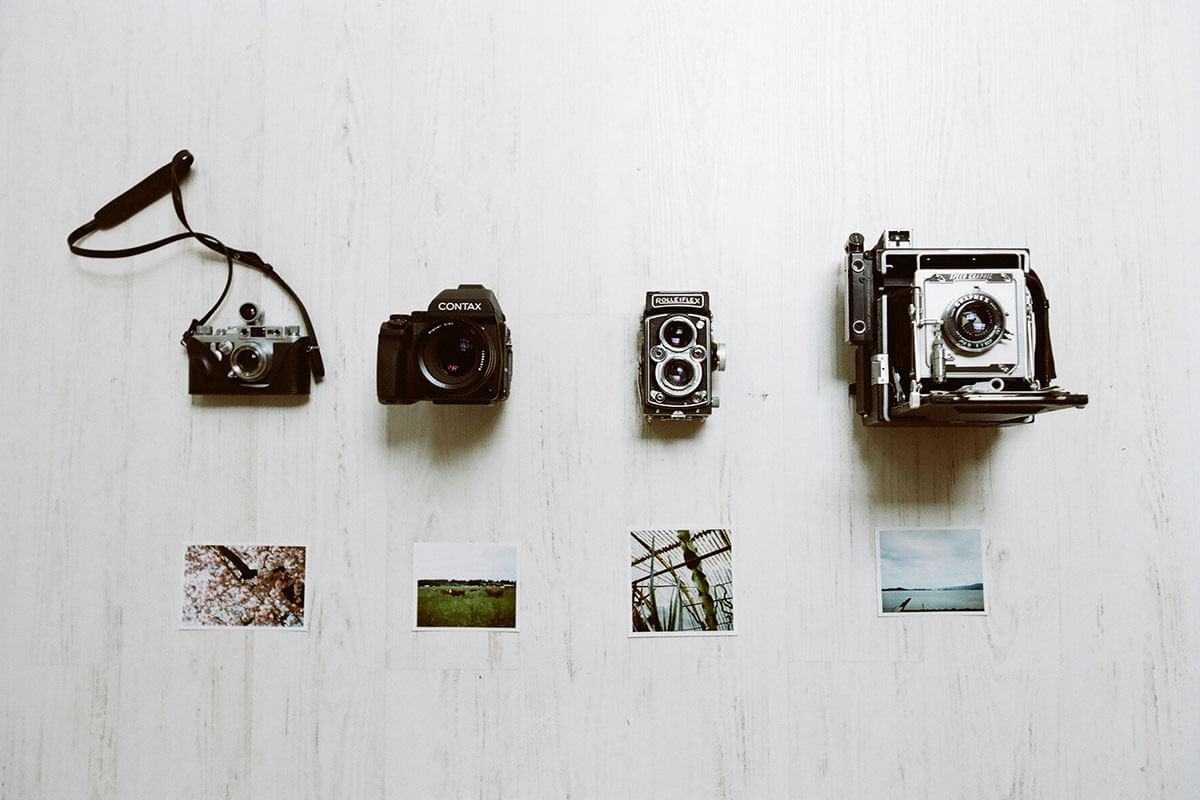
History of photography 2
The British *William Fox Talbot, who already carried out research with photosensitive papers, upon learning of Daguerre's advances, in 1839, decided to hasten the presentation of his works to the Royal Institution and the Royal Society, seeking to guarantee the rights to his inventions. Talbot developed a different process called calotyping, using sheets of paper covered with silver chloride, which were then placed in contact with another paper, producing the positive image. This process is very similar to the photographic process in use today in that it also produces a negative that can be reused to produce multiple positive images. At the time, Hippolyte Bayard also developed a photography method. However, because it took so long to announce it, he could no longer be recognized as its inventor.

In Brazil, the Frenchman living in Campinas (São Paulo), Hércules Florence, achieved better results than Daguerre, as he developed negative results. However, despite attempts to disseminate his invention, which he called "Photographie"-he was the legitimate inventor of the word-he did not get recognition at the time. His life and work were only properly rescued in 1976 by Boris Kossoy.
Photography then became popular as a consumer product from 1888. The Kodak company opened its doors with a marketing speech where everyone could take their pictures, without the need for professional photographers with the introduction of the "coffin" type camera and the film on replaceable rollers created by George Eastman.
Since then, the photographic market has experienced increasing technological evolution, such as the establishment of color film as the standard and automatic focus, or automatic exposure. These innovations undoubtedly make image capture easier, improve reproduction quality or processing speed, but very little has changed in the basic principles of photography.

The major recent change, produced since the end of the 20th century, was the digitalization of photographic systems. Digital photography has changed paradigms in the world of photography, minimizing costs, reducing steps, accelerating processes and facilitating the production, manipulation, storage and transmission of images around the world. The improvement of the digital image reproduction technology has broken barriers of restriction in relation to this system by sectors that still give prestige to the traditional film, and thus, irreversibly expanding the field of digital photography.






- April 17, 2025
The Global Art Market Faces a Recession Amid Global Crises



- April 17, 2025
Gallery Of Humor Drawing By Swaha - France

- April 17, 2025
12 Houses with Art Studios in Latin Ame…

- April 16, 2025
Famous 20th-Century Painters and Their …

- April 14, 2025
Analysis of Artistic Works Created with…

- April 13, 2025
From Digital Art to Contemporary Art

- April 13, 2025
The Expansion of Photography

- April 12, 2025
When is photography considered art?

- April 10, 2025
Impact of AI on the Diversity of Artist…

- April 10, 2025
How can AI enhance artistic creativity?

- April 09, 2025
The Impact of Artificial Intelligence o…

- April 08, 2025
Latin American art, a goldmine of oppor…

- April 07, 2025
Contemporary Art in Brazil: Between the…

- April 07, 2025
Mexican Muralism: Art for the People

- April 06, 2025
History of graphic art in Brazil

- April 05, 2025
Modern Art: A Renaissance in Art History

- April 02, 2025
Aldo Estrada (Ilustronauta): From Peruv…

- March 31, 2025
How ChatGPT is Turning Photos into Japa…

- March 30, 2025
Arístides Hernández (ARES): A Sharp Min…

- March 30, 2025
The Masters of Cuban Caricature: Celebr…

- March 29, 2025
Where Will Artificial Intelligence Take…

- March 27, 2025
A Few Fascinating Features of Latin Ame…

- August 29, 2023
The history of Bolivian art

- February 19, 2024
Analysis and meaning of Van Gogh's Star…

- January 28, 2024
Culture and Art in Argentina

- September 25, 2023
What is the importance of art in human …

- September 23, 2023
What is paint?

- August 10, 2023
14 questions and answers about the art …

- August 30, 2023
First artistic manifestations

- August 23, 2023
The 11 types of art and their meanings

- August 16, 2023
The 15 greatest painters in art history

- March 26, 2024
The importance of technology in art1

- September 23, 2023
History of painting

- April 06, 2024
History of visual arts in Ecuador

- January 31, 2024
Examples of Street Art – Urban Art

- March 26, 2024
Cultural identity and its impact on art…

- January 20, 2024
What is the relationship between art an…

- April 07, 2024
Graffiti in Latin American culture

- October 21, 2023
Contemporary art after the Second World…

- August 25, 2024
A Comprehensive Analysis of the Cartoon…

- September 23, 2023
Painting characteristics

- March 05, 2024
The art of sculpture in Latin America

- February 19, 2024
Analysis and meaning of Van Gogh's Star…

- August 13, 2023
9 Latino painters and their great contr…

- August 29, 2023
The history of Bolivian art

- August 10, 2023
14 questions and answers about the art …

- January 28, 2024
Culture and Art in Argentina

- August 23, 2023
The 11 types of art and their meanings

- November 06, 2023
5 Latin American artists and their works

- September 23, 2023
Painting characteristics

- August 27, 2023
15 main works of Van Gogh

- September 23, 2023
What is paint?

- September 25, 2023
What is the importance of art in human …

- August 30, 2023
First artistic manifestations

- January 20, 2024
What is the relationship between art an…

- December 18, 2023
10 iconic works by Oscar Niemeyer, geni…

- January 12, 2024
10 most beautiful statues and sculpture…

- October 30, 2023
Characteristics of Contemporary Art

- March 26, 2024
Cultural identity and its impact on art…

- August 22, 2023
What are Plastic Arts?

- April 16, 2024
The most important painters of Latin Am…

- October 11, 2023


